The greatest mistake in the history of physics
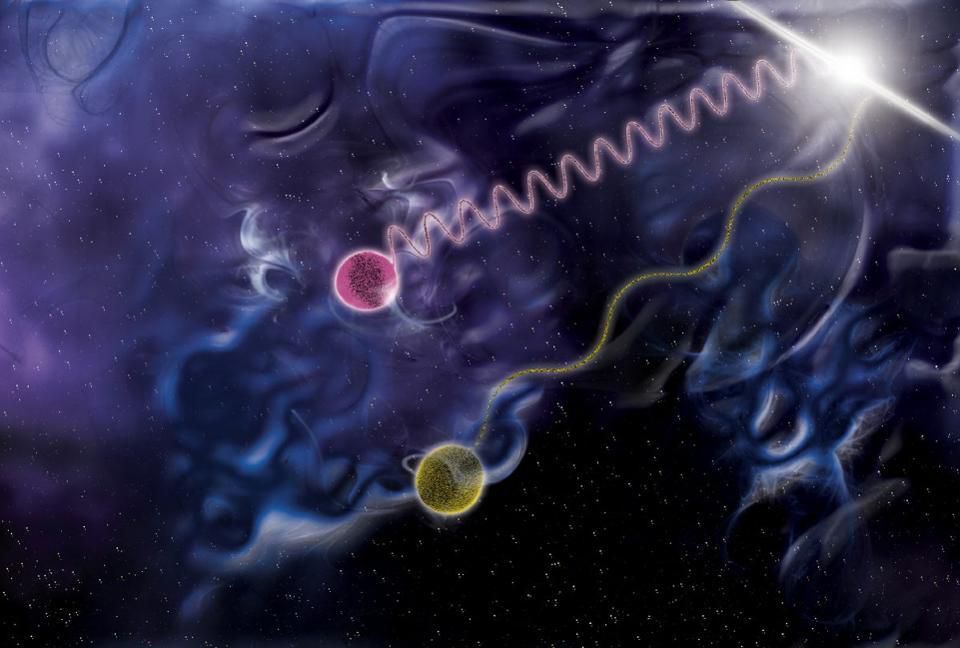
Today we believe that all particles, from massive quarks to massless photons, have a double particle / wave nature. Hundreds of years ago, people considered only particles. But in 1818, the waves were destined to make a triumphal return based on studies of the nature of light.
We all love our most valuable ideas about the structure of the world and the universe. Our concept of reality is often inextricably linked to our self-image. But to be a scientist is to be ready to question all of these ideas with each test. Just one observation, measurement or experiment, contrary to theory, is enough to reconsider or completely abandon our view of reality. If we can reproduce this scientific test and convincingly show that it does not coincide with the prevailing theory, we are laying the foundations of a scientific revolution. But if someone does not want to subject the theory or assumptions to tests, he probably makes the greatest mistake in the history of physics.

" Mathematical Principles of Natural Philosophy " (Latin Philosophiæ Naturalis Principia Mathematica) by Isaac Newton, third edition, 1726. Newton's treatises on such topics as mechanics, gravity and light, became the foundations of much of modern physics.
Human nature requires heroes: people to whom we are equal, whom we admire, to whom we strive to become similar. The greatest hero of physics for many centuries was Isaac Newton. Newton was a pillar of the scientific achievements of mankind. His theory of world wideness perfectly described everything, from the movement of comets, planets and moons, before objects fall to Earth. His description of the movement of objects, including the laws of motion and the effect on them of forces and accelerations, remain true in almost any conditions even today. Arguing with Newton was stupid.
')
Therefore, at the beginning of the XIX century, the young French scientist Augustin Jean Fresnel had to understand that he was embroiled in an adventure.
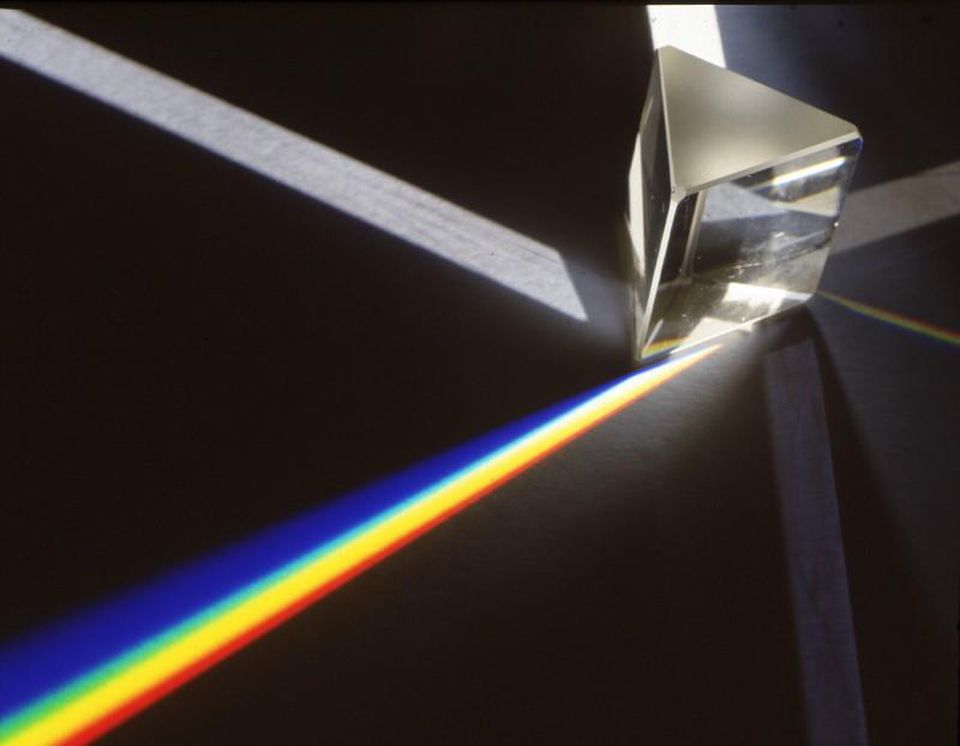
The behavior of white light passing through a prism demonstrates how in a medium light of different energies travels at different speeds, unlike vacuum. Newton was the first to explain the reflection, refraction, absorption and transmission of light, as well as the ability of white light to split into several colors.
Although today it is less well known than his achievements in mechanics or gravity, but Newton was also one of the first scientists to explain how light works. He explained reflection, refraction, absorption and transmission of light, as well as how the white color consists of different colors. Moving from air to water and back, the rays of light bend, and on each surface there appears a reflected component, and a component that has passed through.
His corpuscular theory of light was based on particles, and the idea that a beam is light was consistent with a wide range of experiments. Although the wave theory of light, advanced by Christian Huygens , existed in Newton's time, it could not explain the experiments with prisms. As a result, the winner was the Newtonian Opticks, as well as its mechanics with gravity.

The wave properties of light began to be understood even better thanks to Thomas Young's two-slit experiments, where constructive and destructive interference was clearly manifested. These experiments for classic waves have been known since the 17th century; in the 1800s, Jung showed that they apply to light.
However, at the dawn of the XIX century, she began to experience difficulties. Thomas Jung conducted the now classic experiment in which light passed through a double slit: two narrow slits, located at a short distance from each other. And the light, instead of behaving like a corpuscle, and passing either through one slit or through another, showed an interference pattern: a sequence of light and dark stripes.
Moreover, the pattern of the bands was determined by two adjustable experimental parameters: the distance between the slits and the color of the light. If the red color corresponded to the long-wave light and the blue to the short-wave light, then the light behaved exactly as one would expect from a wave. Jung's experiment had meaning only if the nature of the light was fundamentally wavelike.
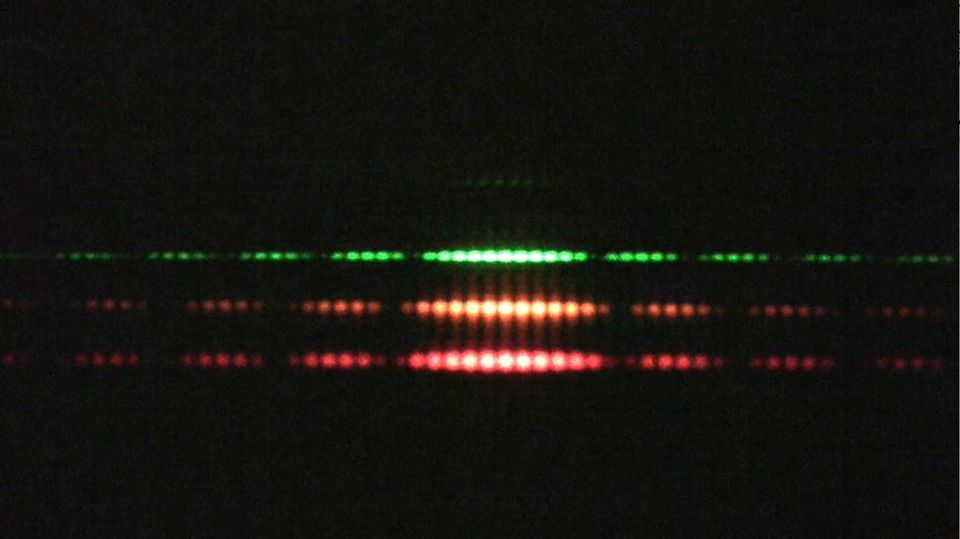
In the double-slit experiment with light, interference patterns appear, as with any wave. The properties of different colors of light are studied due to the difference in their wavelengths.
But at the same time it was impossible to ignore the successes of Newton. The nature of light has become a controversial topic among scientists of the early nineteenth century. In 1818, the French Academy of Sciences announced a competition to explain the nature of light. Is it a wave, or a particle? How to test it and how to confirm the test?
Augustin Jean Fresnel took part in the competition, despite the fact that he was a civil engineer by training, not a physicist or mathematician. He formulated a new theory of light, which he was unspeakably pleased with, basically basing it on the work of Huygens of the 17th century and Jung's recent experiments. Everything was ready to commit the greatest mistake of physics.

Coherent light illumination (for example, from a laser) of an opaque spherical object is one of the clearest ways to check the wave, rather than the corpuscular, nature of light.
After he submitted his work for consideration, one of the judges, the famous physicist and mathematician Simeon Denis Poisson , studied Fresnel theory very thoroughly. If light was a particle, as Newton described, it would simply move in a straight line in space. But if the light was a wave, it would participate in the interference and diffraction when it encounters an obstacle, a slit, or a face of a surface. Different geometrical configurations can produce different patterns, but the overall picture remains.
Poisson imagined the light of a single color: a single wavelength in Fresnel’s theory. Imagine that such light has the shape of a cone and meets a spherical object. According to Newton's theory, the shadow should turn out to be round, surrounded by light. According to Fresnel theory, as Poisson demonstrated, there should be one bright point in the very center of the shadow. This prediction, as Poisson concluded, was obviously absurd.
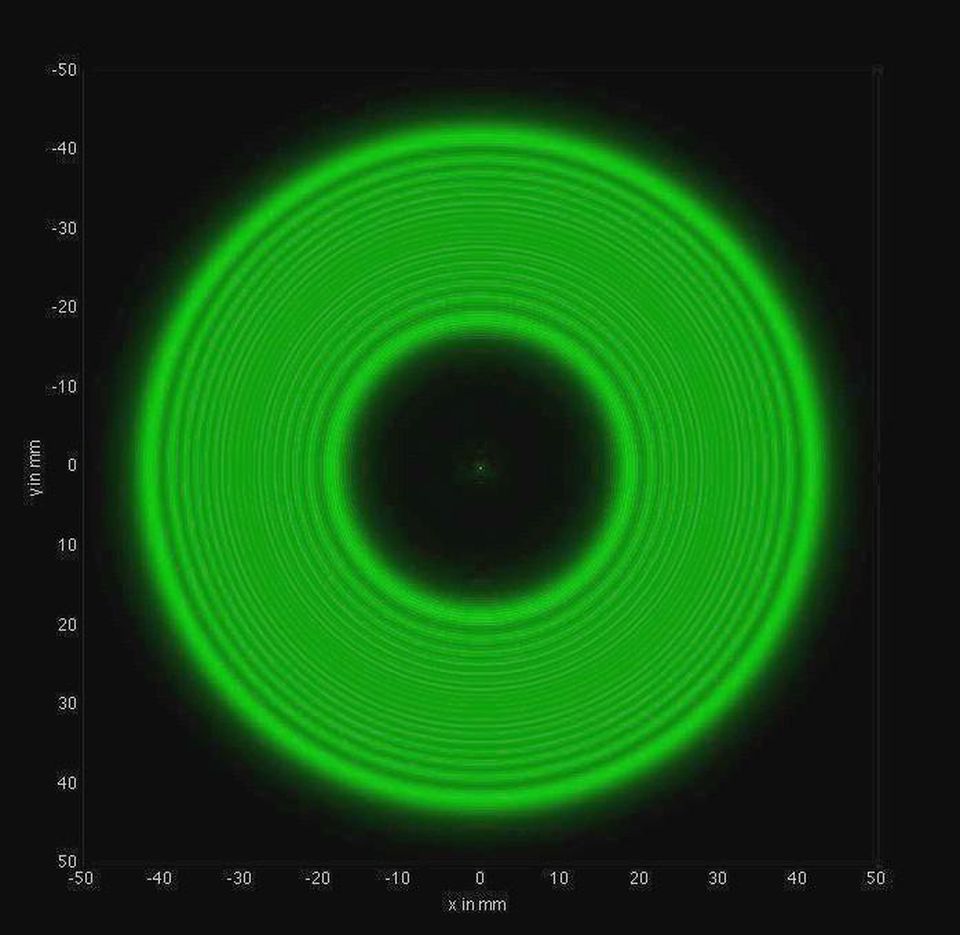
A theoretical prediction of how a wave pattern of light should look around a spherical opaque object. The bright dot in the center was absurd, forcing many to abandon the wave theory.
Poisson tried to refute the Fresnel theory, showing that it leads to false conclusions: evidence from the contrary. Poisson wanted to deduce the prediction from the theory of wave light, which would obviously have an absurd consequence, which would prove its falsity. If the prediction was absurd, then the wave theory should be false. Newton was right, Fresnel was wrong, the case was closed.
However, this is the greatest mistake in the history of physics! It is impossible to draw conclusions, no matter how obvious they seem, without conducting a decisive experiment. Physics is not made on the basis of elegance, beauty, simplicity of proof or controversy. It is established by inquiries to nature itself - and therefore, by conducting relevant experiments.

Model experiment, in which a bright spot found Arago. Sometimes this stain is called the Poisson stain , but it must be glorified through the ages, like the Arago stain, noting his efforts leading to a real experiment.
Fortunately for Fresnel and science, the head of the panel of judges was not impressed by Poisson’s reasoning. Francois Arago , who later became famous as a politician, abolitionist and prime minister of France, defended not only Fresnel, but the entire process of scientific research, conducted a decisive experiment on his own. He made a spherical obstacle and gave him a monochromatic light, testing the prediction of the wave theory about constructive interference. And right in the center of the shadow one could easily distinguish a bright spot of light. Although the prediction of the Fresnel theory seemed absurd, the experimental evidence was ready to confirm it. Absurd, or not absurd - nature has spoken its word.

The result of the experiment with the use of laser light flowing around a spherical object and real optical data.
The big mistake a physicist can be is that he decides that he knows the answer beforehand. An even bigger mistake would be to assume that the experiment is not necessary, since its intuition will tell you what happens in nature and what does not happen. But physics is not always an intuitive science, and for this reason we must always turn to experiments, observations, and measurable tests of our theories.
Without such an approach, we would never have refuted the view of the nature of Aristotle. We would not have discovered the Special Theory of Relativity, Quantum Mechanics, or the Current Theory of Gravity: Einstein's General Theory of Relativity. And we certainly would never have discovered the wave nature of light.
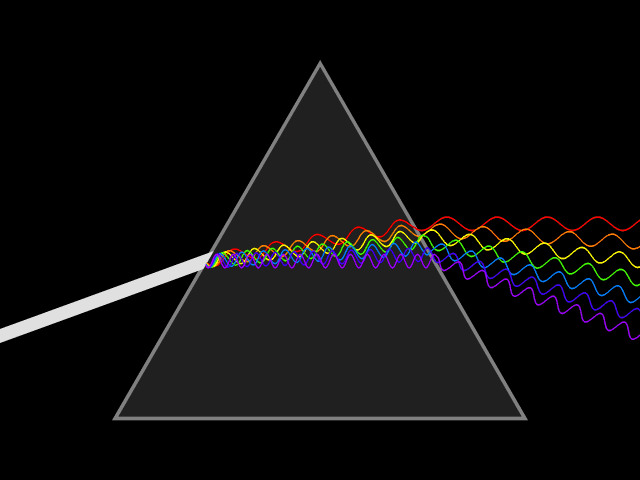
Schematic animation of a constant beam of light split by a prism. The fact that light is a wave simultaneously coincides with and is a deeper explanation of the fact that white light can be split into different colors.
200 years have passed since the greatest mistake in the history of physics. And the fact that this error practically did not affect anything, happened only because of the scientific sequence of Francois Arago, who was not afraid to stand up for the most important scientific principle. We are obliged to answer questions about the universe, putting it to the test. After all, Newton himself in his Opticks wrote:
My goal for this book is not to explain the properties of light by assumptions, but to assume and prove them on the basis of reason and experiments.
Without experiments, no science will work. The assumption that we can look at a prediction and declare it absurd is our big flaw, as humans. Nature may or may not be absurd; it does not depend on whether it is correct or not. To do everything right, you need to conduct an experiment. Without this, you are not engaged in science.
More articles on the popular science topic can be found on the Golovanov.net website. Read: how biodiversity arose, how X-rays proved the existence of dark matter, how brute force helps physicists at the Large Hadron Collider, why Titan is more like Earth than we thought; a series of articles on cosmology " Ask Ethan ".
I remind you that the project exists only thanks to the support of readers (bank cards, Yandex.Money, WebMoney, Bitcoins, and at least as). Thanks to everyone who has already provided support!
Source: https://habr.com/ru/post/431564/
All Articles